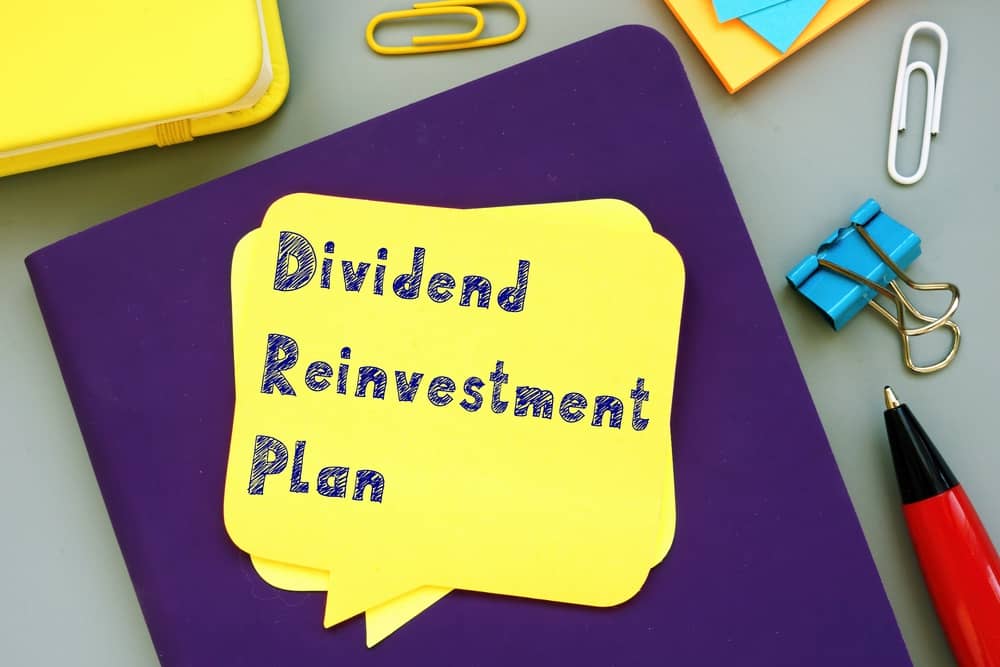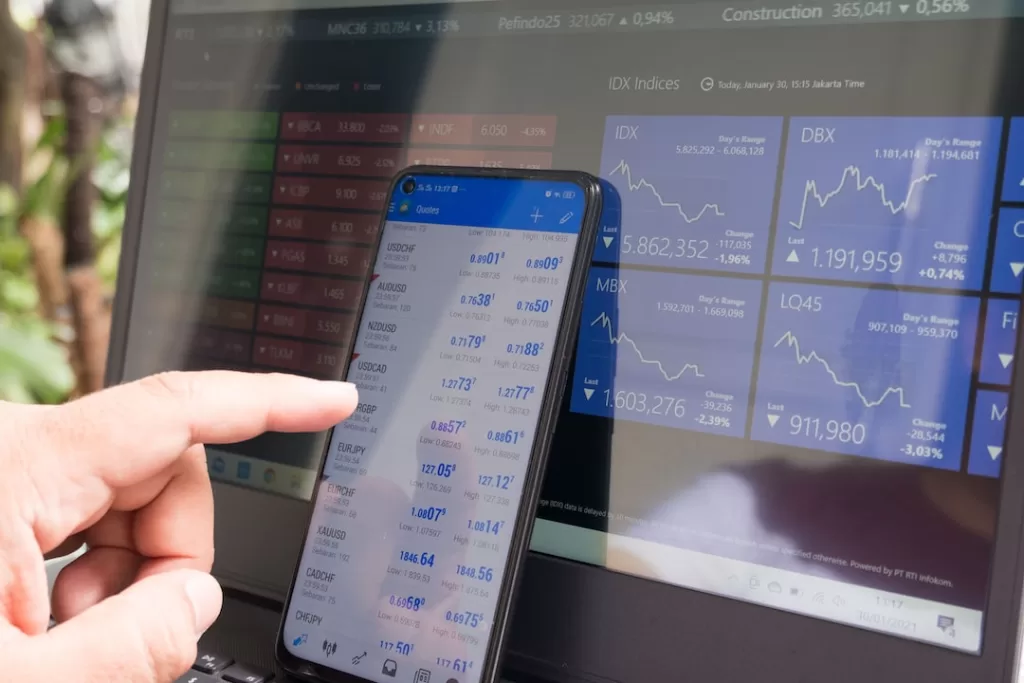Dreaming of creating a steady stream of passive income? Building a portfolio focused on dividend stocks can help you achieve this goal. With the right strategy, you can generate dividends that will pay you $1000 or more every month.
Disclaimer: This information is general in nature and for informational purposes only. It is not personal financial advice and has not taken into account your personal financial position or objectives. Make sure to refer to a licensed financial or tax advisor.
Table of Contents
What Are Dividends and How Do They Work?
Dividends are payments made by a corporation to its shareholders, usually in the form of cash or additional shares of stock. They represent a portion of the company’s profits and are typically paid out on a regular basis, often quarterly. This steady stream of income can be a valuable source of passive income for investors.
Dividend yield is a key metric used to evaluate the attractiveness of a dividend investment. It is calculated by dividing the annual dividend by the stock’s current market price, expressed as a percentage. A higher dividend yield indicates a higher income relative to the investment’s cost.
Crafting a Dividend Investing Approach
When embarking on dividend investing, one of the first steps is determining what type of stocks fit into your overall plan. There are many different categories to consider:
- Dividend Aristocrats: These are stocks in the S&P 500 that have increased their dividends consistently for 25+ straight years. Companies like Coca-Cola and Procter & Gamble fall into this bucket.
- High Dividend Stocks: These stocks offer above-average dividend yields, allowing investors to collect higher regular payouts. Telecoms and utilities often have attractive yields.
- Monthly Dividend Payers: Instead of quarterly dividends, these stocks distribute income to shareholders every month. This aligns well with the goal of making $1000 monthly in passive income.
In most cases, blending stocks from these different groups can create a portfolio with both growth and regular income.
Other strategic factors also come into play:
- Asset Allocation: Deciding what percentage of your portfolio should be in stocks vs bonds vs alternatives. This balances risk vs reward.
- Diversification: Investing across market sectors, countries, etc minimizes exposure to swings in individual stocks.
- Reinvestment: Using dividend reinvestment plans (DRIPs) or manually buying more shares with dividends juices overall compound growth.
Finding the Right Stocks
With a strategy in hand, now you need to fill your portfolio with quality stocks. This requires a methodical approach:
Screen for Dividend Payers
Use online screeners to filter the entire stock universe down to names offering:
- Elevated & steady dividend yields
- Extended dividend growth histories
- Comfortable payout ratios below 75%
This will highlight stocks for further consideration.
Assess Company Fundamentals
Dig deeper into metrics like:
- Earnings growth (prioritizing double-digit expansion)
- The firm’s competitive advantage in its industry
- Management track record
This helps ensure you invest in companies poised for long-term success.
Favor Defensive Sectors
Sectors like consumer staples, healthcare & utilities outperform during economic downturns. Their essential products insulate them from market drops, enabling them to maintain dividends.
Use Multiple Tools
Subscription tools like Simply Safe Dividends and stock screeners like Finviz allow filtering on key dividend criteria. Research sites like Seeking Alpha provide company analyses. Excel spreadsheets help track your progress.
Building a Dividend Stock Portfolio
When constructing a dividend stock portfolio, it is essential to identify high dividend-paying stocks that offer both a reliable income stream and the potential for long-term capital growth. A diversified portfolio can help minimize risk and maximize overall returns.
Investors should consider various factors when selecting dividend stocks, such as the company’s financial health, history of dividend payments, and the sustainability of the dividend yield. Moreover, diversification across different sectors and industries can provide added stability to the portfolio.
Constructing a Monthly Dividend Portfolio
With research complete, it’s time to assemble a portfolio capable of hitting that $1000 per month target.
As a baseline, if you achieved an average 4% portfolio yield you would need $300,000 invested to produce $1000 monthly. Using strategies to boost yield allows reaching this goal with a smaller starting portfolio size.
The math breaks down like this:
You want to earn $1000/month. That’s $12,000/year in dividends. At an assume 4% yield on your portfolio, take the $12,000 and divide it by 4%. (12,000/0.04), and you are left with the capital required to invest: $300,000
Here is an example basket of stocks you could include to accelerate your progress:
| Company | Sector | Yield |
|---|---|---|
| Realty Income | REIT | 4.2% |
| Enbridge | Energy | 6.4% |
| Verizon | Telecom | 6.2% |
| IBM | Tech | 4.9% |
| 3M | Industrials | 4.4% |
| Coca-Cola | Consumer Staples | 2.9% |
| Merck | Healthcare | 3.3% |
Some will suggest that you get the best outcome by investing in a portfolio of up to 30 stocks. If that’s the case, and using that as an example, you could roughly allocate an even 3.33% to each stock for diversity. If the average stock’s dividend is 4% annually, you would need over $300,000 capital invested to return $12,000 per year, which is the $1000 per month in dividend income. This approach would add some safety because of the diversity across companies and sectors.
The Reality Is You Need Some Serious Capital
But, as you can see, to make $1000/month in dividends you need a lot of capital invested. Unless of course you take on more risk by allocating more of your portfolio to higher yielding dividend stocks.
If you were to invest solely in Apple you would need $1.2 million invested to see $100/month returns! But if you were to invest in Chicago Atlantic Real Estate Finance Inc (REFI) with it’s current 12.69% yield, you would only need $94,562 invested. That’s a huge difference. But investing in one sole stock, and a smaller one at that, can be very risky.
Blending fixed income sources like bonds, CD’s and money markets can help to balance risk. And reinvesting all dividends to compound your monthly earnings. Gradually shift your portfolio mix toward higher yielding stocks as risk tolerance allows.
Over time, this strategy helps you replace portions of your earned income with reliable passive dividend streams. Monitoring progress with dividend tracking spreadsheets keeps motivation high.
Strategies for Generating Passive Income Every Month
To achieve a consistent stream of monthly income from dividend stocks, investors can focus on building a portfolio that includes securities with varying dividend payment schedules. By staggering the ex-dividend dates of different stocks, it is possible to create a regular cash flow throughout the month.
Creating a sustainable dividend payment plan involves reinvesting dividends to acquire additional shares, thus compounding the income over time. This approach can significantly boost total returns and accelerate the path to achieving $1000 per month in dividends.
Alternative Strategies to Accelerate Growth
Beyond straight stock ownership, alternative dividend tactics can turbocharge your portfolio growth including:
Dividend Reinvestment Plans (DRIPs): Allow automatic stock share purchases with dividend payouts. This magnifies overall compounding.
Equity Preferred Securities: Function like bonds but with higher yields. Issues from banks and insurance cos offer 6-8% yields.
Covered Call Options: Selling call options against existing stock holdings earns premium income. This supplements dividends.
Closed End Funds (CEFs): Funds investing in bonds/stocks and using leverage to offer 6-11% dividends. Funds covering utilities/infrastructure are attractive.
Real Estate Investment Trusts (REITs): Companies owning real estate properties. Benefit from rising property values and rents. Must pay 90% of taxable income as dividends to shareholders.
Savvy application of these strategies can grow a $100,000 portfolio into one throwing off $1000+ per month in dividends remarkably quickly. This however requires some involvement, monitoring, research and so isn’t entirely passive.
Factors Influencing Monthly Dividend Income
Earning $1000 a month in dividends requires a well-structured portfolio of high-dividend-yield stocks, which can provide a consistent flow of income. Identifying stocks with a history of reliable dividend payments and strong yields can contribute to achieving the desired monthly income target.
Qualified dividend stocks, which meet specific IRS criteria, offer favorable tax treatment and can augment the after-tax dividend income. Investing in these qualified dividend-paying securities can enhance the overall monthly income from the portfolio.
Key Takeaways: Generate Massive Passive Income
A carefully constructed, high yield dividend stock portfolio can realistically generate $1000 or more in monthly income. But achieving this requires:
- Patience: Allow enough time for reinvested dividends to compound earnings
- Consistency: Invest new money at regular intervals to grow the portfolio
- Monitoring: Review holdings regularly and prune underperformers
- Balance: Manage overall asset allocation for an optimal risk-reward ratio
Embrace these core principles, leverage the research tools available, and remain invested through market swings. This empowers reaching that magical $1000 monthly dividend milestone sooner than you may think!
The freedom of earning steady passive income streams allows reclaiming control of your time to spend as you choose. Follow these dividends investing steps to work toward realizing that financial freedom for yourself.
– Can I Learn How to Make $1000 a Month Through Dividend Investing from the Best Books on the Subject?
Yes, you can learn how to make $1000 a month through dividend investing from the best dividend investing books 2024. These books offer valuable insights, strategies, and tips to help you build a profitable dividend portfolio. By learning from experts in the field, you can set yourself up for success in dividend investing.
Managing a Dividend Portfolio for Monthly Payouts
To ensure a steady stream of monthly dividends, investors should consider the concept of dividend payout ratio, which measures the proportion of earnings distributed as dividends. A lower payout ratio signifies a sustainable dividend level and potential for future growth.
Strategies aimed at building a portfolio that pays dividends every month may involve a combination of individual dividend stocks and dividend-focused exchange-traded funds (ETFs). This approach can provide diversification while maintaining a consistent income stream.
FAQ
What is dividend investing and how can it help me make $1000 a month?
A: Dividend investing involves purchasing stocks that pay out a portion of their earnings to shareholders in the form of dividends. By investing in high-yield dividend stocks, you can potentially earn passive income that could help you reach your $1000 a month goal.
How do I find dividend-paying stocks to invest in?
You can find dividend-paying stocks by using investment research platforms, screening for stocks with a history of consistent dividend payments, and analyzing their dividend yields.
What is dividend yield and why is it important in dividend investing?
The dividend yield is a measure of how much a company pays out in dividends relative to its stock price. It is important in dividend investing as it helps you assess the income potential of a stock based on its dividend payments.
How much do I need to invest to generate $1000 a month in dividends?
The amount you need to invest depends on the average dividend yield of the stocks in your portfolio. Generally, to earn $1000 a month, you would need to invest in stocks with a higher than average dividend yield or invest a larger sum of money.
Can I receive dividends on a monthly basis?
While most companies pay dividends on a quarterly basis, there are some that pay on a monthly basis. You can look for stocks that offer monthly dividend payments to generate income each month.
Are dividends taxable?
Yes, dividends are generally taxable. However, qualified dividends are taxed at a lower rate than ordinary income, so it’s important to consider the tax implications of your dividend income.
Should I invest in individual stocks or dividend ETFs to reach my $1000 a month goal?
It depends on your investment strategy and risk tolerance. Investing in a portfolio of dividend-paying stocks can provide diversification, while dividend ETFs offer a convenient way to gain exposure to a basket of dividend-paying companies.
What are some key factors to consider when selecting dividend stocks?
When selecting dividend stocks, consider factors such as the company’s dividend payout ratio, dividend growth history, and the stability of its business model. These can help assess the sustainability of the dividends.
Can I make $1000 a month through dividend investing without a large initial investment?
It may be challenging to achieve $1000 a month in dividends without a significant initial investment, as high dividend yields or a large portfolio of dividend stocks may be required to generate that level of income.
How can I build a portfolio of dividend stocks for monthly income?
You can build a portfolio of dividend stocks by researching and selecting stocks with a history of consistent dividend payments, diversifying across different sectors, and regularly monitoring the performance of your holdings.
###







